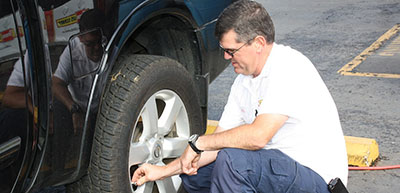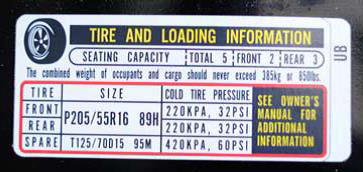Tire Inflation Pressure

Having proper inflation in your tires is important to maximize the life of your tires and their gas mileage, but most importantly, it is important for your safety. Under- or over-inflated tires can cause accidents. TIA recommends that you check your tire pressure once a month and before any long trips. It’s easy and just takes a few minutes. Here’s how:
- Purchase an accurate tire pressure gauge and keep it in your car.
- Find the tire pressure level required for your car. This information is usually on a yellow sticker in the doorjamb on the driver side. It is also contained in the owner's manual. The pressure level may differ for front and rear tires.

- Check your tires when the tires are cold. First thing in the morning is best or at least two hours after you have driven.
- Unscrew the valve cap and set it aside where you won’t lose it. Insert the pressure gauge into the valve stem on your tire. There may be a slight hiss sounds as you press down on the valve stem and again when you release it. Read the tire pressure on the gauge. You might consider writing down the pressure as you go around the car.
- Compare the measured psi to the psi required psi for your vehicle. If your psi is above the number, let air out until it matches. If below, you will need to fill the tire with air until it reaches the proper number.
Checking tire pressure is important. Make it part of your monthly routine by writing it down on your calendar or putting a monthly reminder on your smartphone.